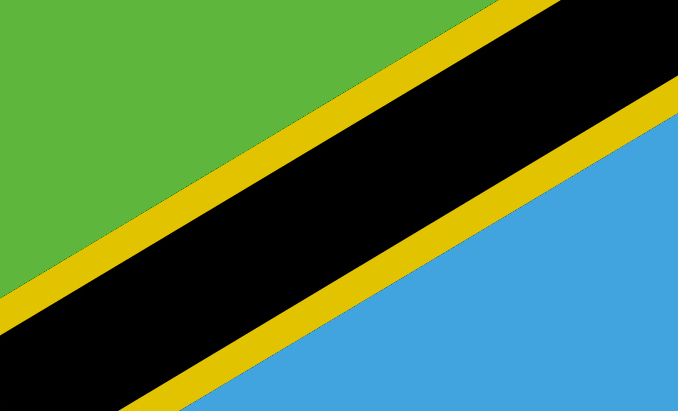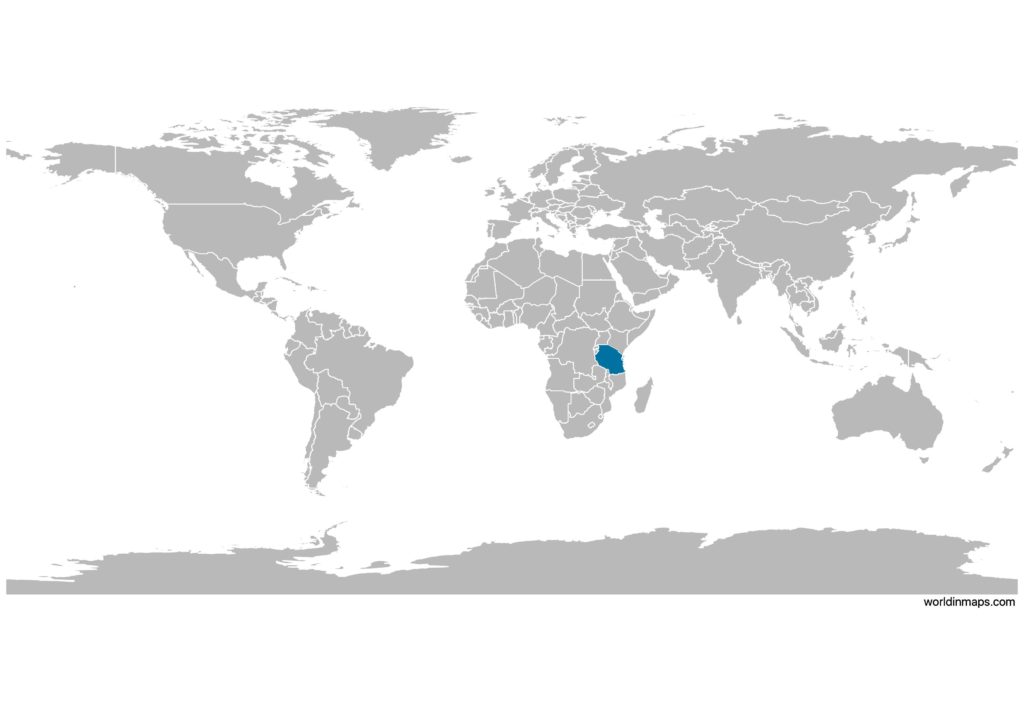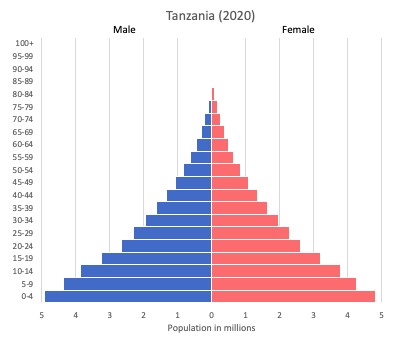Tanzania

| Government | |
| Name | United Republic of Tanzania |
| Swahili | Jamhuri ya Muungano wa Tanzania |
| Government type | presidential republic |
| Capital | Dodoma (410,956 (2013)) |
| Currency | Tanzanian shilling (TZS) |
| Organization | |
| Member State | Commonwealth of Nations |
| People | |
| Population (2020) | 59,734,213 (25th) |
| Density of population | 47.5 P/km2 |
| Nationality | Tanzanian |
| Official languages | |
| Kiswahili or Swahili | |
| English | |
| Ethnic groups | |
| mainland – African (95% are Bantu consisting of more than 130 tribes) | 99% |
| Other | 1% |
| Religions (2010) | |
| Christian | 61.4% |
| Muslim | 35.2% |
| folk religion | 1.8% |
| other | 0.2% |
| unaffiliated | 1.4% |
| Life expectancy (2020) | |
| Male | 62.3 years |
| Female | 65.5 years |
| Total population | 63.9 years (203rd) |
| Homicides | |
| Total (2016) | 6.5 per 100,000 people (50th) |
| Geography | |
| Land area | 885,800 km2 |
| water area | 61,500 km2 |
| total area | 947,300 km2 (32nd) |
| Mean elevation | 1,018 m |
| Lowest point | |
| Indian Ocean | 0 m |
| Highest point | |
| Kilimanjaro (highest point in Africa) | 5,895 m |
| Land use (2011) | |
| Agricultural land | 43.7% |
| Arable land | 14.3% |
| Permanent crops | 2.3% |
| Permanent pasture | 27.1% |
| Forest | 37.3% |
| Other | 19% |
| Urbanization | |
| Urban population (2020) | 35.2% |
| Rate of urbanization | 5.22% annual rate of change (2015 – 2020) |
| Economy | |
| Labor force (2017) | 24.89 million (26th) |
| Labor force by occupation (2014) | |
| Agriculture | 66.9% |
| Industry | 6.4% |
| Services | 26.6% |
| Unemployment rate (2014) | 10.3% (144th) |
| GDP (PPP) (estimate 2019) | |
| Total | $186.060 billion |
| Per capita | $3,574 |
| GDP (nominal) (estimate 2019) | |
| Total | $61.032 billion |
| Per capita | $1,172 |
| GDP by sector (estimate 2017) | |
| Agriculture | 23.4% |
| Industry | 28.6% |
| Services | 47.6% |
| Exports (2017) | $4.971 billion (107th) |
| Exports partners (2017) | |
| India | 21.8% |
| South Africa | 17.9% |
| Kenya | 8.8% |
| Switzerland | 6.7% |
| Belgium | 5.9% |
| Democratic Republic of the Congo | 5.8% |
| China | 4.8% |
| Imports (2017) | $7.869 billion (111st) |
| Imports partners (2017) | |
| India | 16.5% |
| China | 15.8% |
| UAE | 9.2% |
| Saudi Arabia | 7.9% |
| South Africa | 5.1% |
| Japan | 4.9% |
| Switzerland | 4.4% |
Tanzania on the world map

Tanzania top 10 largest cities (2013)
- Dar es Salaam (4,364,541)
- Mwanza (706,543)
- Arusha (416,442)
- Dodoma (410,956)
- Mbeya (385,279)
- Morogoro (315,866)
- Tanga (273,332)
- Kahama (242,208)
- Tabora (226,999)
- Zanzibar City (223,033)
Demography
Population pyramid

Age structure data
Estimate for 2020:
- 0-14 years: 42.7% (male 12,632,772/female 12,369,115)
- 15-24 years: 20.39% (male 5,988,208/female 5,948,134)
- 25-54 years: 30.31% (male 8,903,629/female 8,844,180)
- 55-64 years: 3.52% (male 954,251/female 1,107,717)
- 65 years and over: 3.08% (male 747,934/female 1,056,905)
Remark: the age structure of a population affects a nation’s key socioeconomic issues. Countries with young populations (high percentage under age 15) need to invest more in schools, while countries with older populations (high percentage ages 65 and over) need to invest more in the health sector. The age structure can also be used to help predict potential political issues. For example, the rapid growth of a young adult population unable to find employment can lead to unrest.
Population from 1950 to 2020
Source: United Nations, Department of Economic and Social Affairs, Population Division (2019). World Population Prospects 2019, Online Edition. Rev. 1.
Evolution of the life expectancy from 1960 to 2018
Source: World Development Indicators, The World Bank
Economy
Agriculture:
coffee, sisal, tea, cotton, pyrethrum (insecticide made from chrysanthemums), cashew nuts, tobacco, cloves, corn, wheat, cassava (manioc, tapioca), bananas, fruits, vegetables, cattle, sheep, goats
Industries:
agricultural processing (sugar, beer, cigarettes, sisal twine), mining (diamonds, gold, and iron), salt, soda ash, cement, oil refining, shoes, apparel, wood products, fertilizer
Exports – commodities:
gold, coffee, cashew nuts, manufactures, cotton
Imports – commodities:
consumer goods, machinery and transportation equipment, industrial raw materials, crude oil
Time zone and current time in Tanzania
Go to our interactive map to get the current time in Tanzania